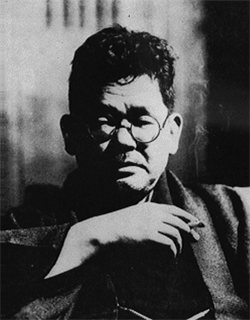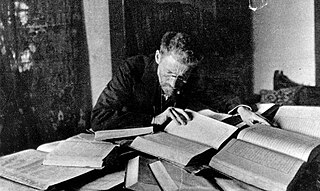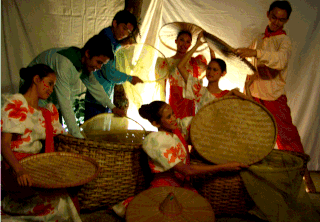
Hiroshi Kikuchi, known by his pen name Kan Kikuchi, was a Japanese author born in Takamatsu, Kagawa Prefecture, Japan. He established the publishing company Bungeishunjū, the monthly magazine of the same name, the Japan Writer's Association and both the Akutagawa and Naoki Prize for popular literature. He came to prominence for the plays "Madame Pearl" and "Father Returns", but his ample support for the Imperial Japanese war effort led to his marginalization in the postwar period. He was also the head of Daiei Motion Picture Company. He is known to have been an avid player of Mahjong.

Yasunari Kawabata was a Japanese novelist and short story writer whose spare, lyrical, subtly-shaded prose works won him the Nobel Prize for Literature in 1968, the first Japanese author to receive the award. His works have enjoyed broad international appeal and are still widely read.

Shōhei Ōoka was a Japanese novelist, literary critic, and lecturer and translator of French literature who was active during the Shōwa period of Japan. Ōoka belongs to the group of postwar writers whose World War II experiences at home and abroad figure prominently in their works. Over his lifetime, he contributed short stories and critical essays to almost every literary magazine in Japan.

Israeli literature is literature written in the State of Israel by Israelis. Most works classed as Israeli literature are written in the Hebrew language, although some Israeli authors write in Yiddish, English, Arabic and Russian.
The Second Generation of Postwar Writers is a classification in modern Japanese literature used for writers who appeared on the postwar literary scene between 1948 and 1949.
The Third Generation of Postwar Writers is a classification in Modern Japanese literature used to group writers who appeared on the postwar literary scene between 1953 and 1955.

Ango Sakaguchi was a Japanese novelist and essayist. His real name was Heigo Sakaguchi.

Philippine literature in English has its roots in the efforts of the United States, then engaged in a war with Filipino nationalist forces at the end of the 19th century. By 1901, public education was institutionalized in the Philippines, with English serving as the medium of instruction. That year, around 600 educators in the S.S. Thomas were tasked to replace the soldiers who had been serving as the first teachers. Outside the academe, the wide availability of reading materials, such as books and newspapers in English, helped Filipinos assimilate the language quickly. Today, 78.53% of topulation can understand or speak English.
Nobuo Kojima was a Japanese writer prominent in the postwar era. He is most readily associated with other writers of his generation, such as Shōtarō Yasuoka, who describe the effects of Japan's defeat in World War II on the country's psyche.
Hiroshi Noma was a noted Japanese author.
The second generation is the generation following the one preceding it.
Jun Etō was the pen name of a Japanese literary critic, active in the Shōwa and early Heisei periods of Japan. His real name was Egashira Atsuo.
Oda Makoto was a Japanese novelist, peace activist, academic and Time Asian Hero.

Gunzō (群像) is a Japanese monthly literary magazine published in Japan.
Shūichi Katō was a Japanese critic and author best known for his works on literature and culture.
Kim Choon-mie is a South Korean academic and Japanologist, honored by the government of Japan for having "[c]ontributed to the introduction of Japanese literature and the promotion of Japanese language education."
Hiroko Takenishi is a Japanese fiction writer and literary critic. Takenishi is best known for her semi-autobiographical short story "The Rite" (1963), which tells of her experience surviving the Atomic Bombing of Hiroshima. In 2012 she was named a Person of Cultural Merit for her writing.
Ha Geun-chan was an early modern South Korean writer.
Haruo Umezaki was a twentieth-century Japanese writer of short stories about Japan during and after World War II.
Tal-su Kim was a Korea-born, Japan-raised writer. He is considered the "founding father" of Resident Korean literature. Although he spent most of his life in Japan, many of his literary works are set in Korea and explore the injustices of colonial rule and its painful aftermath.
This page is based on this
Wikipedia article Text is available under the
CC BY-SA 4.0 license; additional terms may apply.
Images, videos and audio are available under their respective licenses.







